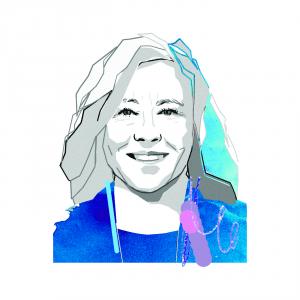The problem facing too many public sector organisations is not that they don’t have enough information. It’s that the information they have often turns out to be thoroughly useless.
This may be slightly harsh, but it illustrates the point that raising an organisation’s information game is about more than quantity and a one-size-fits-all approach. It’s about ensuring quality and specificity – a much harder task.
Surrey County Council is, of course, no different in this respect. Earlier this year, we asked our insight and intelligence community about what they saw as the biggest barrier to the effective use of data. A lack of data was relatively low on the list, at just 6% of respondents, with the biggest obstacles surrounding the quality of data. Nearly a third of those surveyed cited the difficulty in matching information across information silos, and 19% bemoaned the generally poor quality of data.
To take these findings a step further, we asked what was the biggest barrier to turning insight into tangible action. The answers included a lack of leadership (24%), insufficient trust in the data (14%), or not having the skills to interpret and apply findings (14%). But for 33%, the biggest barrier put forward was a reluctance to change processes or practices.
Worthwhile information-gathering and analysis is not necessarily then about increasing data in itself. It is about taking a structural approach and acknowledging that big changes are needed, that a number of old processes need to be consigned to history – and that innovation is paramount.
Councils are generally using data and information to better understand the communities they work with, and develop predictive models that allow for improved support. This means completely transforming the council’s approach and culture, and to put residents’ needs first.
At Surrey County Council, there are a number of big, and not so big, steps being taken to pursue a preventative, demand management, participatory agenda. These are designed to enhance our understanding of the people that live and work in the county, and put them at the heart of all decision-making.
With the right information, therefore, we can make intelligent decisions about the design of services and the best use of resources. We can move into a position where we use data, technology and analytics to help us plan, predict and prevent in collaboration with partners.
People focus
It is only by taking such an approach that we can ensure we continue to focus on outcomes for residents that reflect their changing needs, hopes and expectations.
Data projects should be, at their very core, people-focused. They need to be framed around, for instance, helping frontline staff in their work, providing intelligence and analysis to senior management, or shaping the services that residents rely upon. So it is crucial that these people are involved in the development of these projects.
A tactic that has given us considerable success so far has been the use of “hackathons”, where analysts and decision-makers from across a service ecosystem work together to co-produce new data visualisations. This includes an opportunity to test out risk factors and identify indicators that support the building of a preventative model.
Surrey Heartlands Integrated Care Partnership, in which local health organisations and the council work together with residents and patients to improve services, utilised this approach to involve multiple partners from the integrated care system (ICS).
Funded by the Health Foundation’s Advancing Applied Analytics programme, the team ran three hackathons, which were able to identify intelligence to answer specific questions, create a clear data product and produce a defined action. Key to their success was the time spent with decision-makers, refining the questions to be answered and making sure the answers could inform ways of doing things differently.
This joint approach also meant that decision-makers were able to offer reasons for data variations, allowing for more detailed insight, while multiple perspectives from across the organisations added value to the work being produced. These interactions helped us tailor visualisations in ways that ensured that the data was useful to make decisions.
The hackathons have proven useful at facilitating the development of a network of analysts across organisations. Such opportunities will continue to aid this network, as will a shared style of working that is increasingly becoming business as usual, rather than being treated as a one-off special case.
Building on this success, the knowledge management strategy for Surrey Heartlands ICS has involved establishing a Surrey Office of Data Analytics (SODA), a virtual system-wide intelligence network that delivers joint intelligence and gathers the evidence needed to transform how care is delivered.
This use of data means Surrey Heartlands has been better able to predict demand and plan accordingly. The outcomes include: a significant reduction in delayed transfers of care from hospital; a preventative project for identifying atrial fibrillation and reducing the risk of atrial fibrillation-related strokes; and a reduction in GP referrals to outpatients across one clinical commissioning group, with the introduction of an “advice and guidance” telephone service for GPs.
Silos are one of the clearest signs of an inefficient and ineffective organisation. It leads to duplication and territorialism across teams, means that vital information is not shared and reduces dramatically the prospect of successful joined-up outcomes for residents. A similar problem exists when considering whole organisations working in isolation rather than collaborating with like-minded partners.
In some ways, as with many other local authorities, we are very much in the early stages of our silo-breaking work. Take, for instance, our moves, along with partners, towards using predictive analytics to further tackle domestic abuse. We had already identified it as a sizable, often unreported local issue, with a significant rate of repeat victimisation and high risk of serious harm. The information we had was reactive, looking at the current situation and not providing sufficient detailed insight.
Active approach
We have started to move from this “what happened?” approach to one that asks: “Why is this happening, and what will happen next?” This more active approach is designed to provide insight, influencing early intervention and guiding positive action. By understanding how domestic abuse develops and escalates, we can begin to understand more about who may be at risk, helping us predict and prevent incidents of domestic abuse before they happen.
‘The hackathons have proven useful at facilitating the development of a network of analysts across organisations’
It is, to use one example, possible to identify common characteristics among victims of abuse, such as social isolation, substance misuse, or age, and then run the model against available datasets to identify potential victims who share the same characteristics and risk factors. This allows us to design early intervention services around these insights. Crucially, this approach requires robust governance structures that protects personal information.
We are in the process of setting up extended hackathons, similar to those run through Surrey Heartlands, but with the ability to delve deeper, to expand on this knowledge base and develop specific early intervention, demand management strategies.
Before the Surrey Heartlands project started, 80% of analysts had not collaborated with those from other organisations within the Surrey Heartlands ICS. However, following the third hackathon, 93% of analysts said they felt either very or fairly well connected to colleagues from organisations outside their own. We can hope for a similar level of silo-breaking through our work on tackling domestic abuse.
An often mooted panacea of information-gathering involves establishing a “golden record”, which provides a single joined-up view of a resident, by matching records and data across silos. However, the truth is that many public sector organisations are not in a position to create these in the here and now. There is a need to start small, build the foundations, and then scale up.
Successful adoption of single-view records is about having a clear roadmap for how you are going to build the data governance, establish matching processes, ensure data legislation compliance and so on. It is often too tempting to shoot ahead to the end, leading to a situation where the starting point is to create a golden record while simultaneously establishing all these additional processes and rules. Right from the outset this becomes unwieldy and there is little scope for active learning and continual improvement.
So we have more often started small with simple technical implementation and data preparation, before outlining how we get from that to where we ultimately want to be – a single view of a resident. The stages in between are set out to provide intrinsic value and practical use in themselves – for example, through a single view for helping children with special educational needs and disabilities to transition into adult social care. However, they also allow for learning and building on the data gathered at that particular stage until we are in a position to establish a far more complex and all-encompassing golden record.
This approach allows information to be gathered in such a way that enables us to use more sophisticated analytical techniques, supports semantic consistency, and allows for more opportunities for data exploration through increased data maturity and literacy. This is not to say we are all of a sudden experts in all things information-based, although I hope much of our thinking and learning will filter through to the wider sector.
‘Silos are one of the clearest signs of an inefficient and ineffective organisation’
Indeed, many organisational silos and barriers to a potent information game are deeply entrenched and will take time to break down. That is why it is impossible to overestimate the value of bringing people, communities and organisations together to solve problems in a spirit of true collaboration and partnership.
It is vital to remember how much we can continue to learn from across the sector, as well as beyond it. We want to ensure that we exist in an environment of continual learning and improvement. If we believed we had reached an endpoint, it would mean we were no longer looking to innovate, understand our residents and communities better, or dig deeper into whether the information we had was actually of any use to us.
Which takes us back to our starting point. The information game is one we must continually rise to and refresh, to ensure the best possible outcomes for the communities we serve.
Joanna Killian is chief executive of Surrey County Council




















